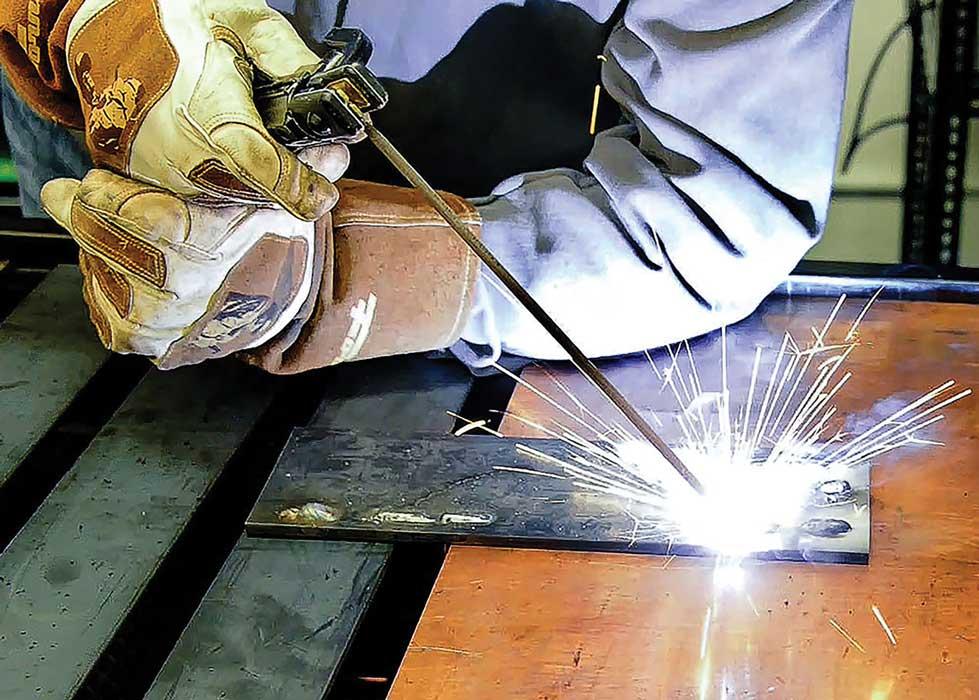The Ultimate Overview to Welding WPS Procedures: A Thorough Summary for Welders
In the elaborate world of welding, Welding Treatment Specs (WPS) act as the backbone of ensuring top quality, consistency, and safety in welding operations. Recognizing the subtleties of creating, executing, and checking WPS treatments is essential for welders aiming to elevate their craft and meet sector requirements. As we look into the numerous elements of a WPS and explore the complexities of credentials and qualification, we will reveal the crucial function these procedures play in the world of welding. Allow's begin on a journey to unravel the complexities and significance of WPS procedures in welding practices.
Relevance of WPS Procedures
Recognizing the significance of Welding Treatment Specs (WPS) procedures is essential for ensuring the quality and integrity of bonded frameworks. WPS procedures offer as a roadmap for welders, laying out the required actions, criteria, and materials required to accomplish an audio weld. By sticking to WPS guidelines, welders can make sure uniformity in their work, bring about reliable and structurally sound welds.
Among the primary reasons that WPS treatments are vital is their function in maintaining weld top quality and integrity. Adhering to the defined welding parameters and strategies described in the WPS assists avoid defects such as porosity, splitting, or incomplete fusion, which can endanger the stamina and resilience of the weld. Furthermore, WPS procedures are critical for ensuring compliance with industry criteria and codes. By complying with well-known WPS guidelines, welders can show that their job fulfills the required requirements for safety and quality, providing guarantee to clients, assessors, and governing bodies. Basically, the importance of WPS procedures can not be overstated, as they are fundamental to attaining regular, high-grade welds that meet industry standards and specs.

Elements of a WPS
A Welding Procedure Requirements (WPS) usually consists of necessary parts that detail the certain requirements for implementing a weld, guaranteeing uniformity and high quality in the welding procedure. The essential elements of a WPS include essential variables such as base steels, filler steels, preheat and interpass temperature levels, welding procedures, shielding gases, welding settings, and post-weld heat treatment needs.
Base steels refer to the materials being signed up with, while filler metals are utilized to fill the space between the base steels throughout welding. The welding process lays out the details technique to be utilized, whether it's gas metal arc welding (GMAW), shielded steel arc welding (SMAW), or another method. Welding placements define the alignments in which welding can be carried out.

Credentials and Certification
Having established the crucial parts of a Welding Procedure Specification (WPS), the focus now changes towards the essential aspects of qualification and qualification in welding techniques.

Qualification, on the various other hand, is the official acknowledgment of a welder's credentials by a relevant accreditation body or organization. Welding qualifications are typically based on the particular welding procedures, materials, and positions a welder is certified to collaborate with. Holding a valid welding qualification demonstrates that a welder satisfies industry criteria and is proficient to execute welding jobs to the needed requirements.
Creating a WPS
To develop a Welding Treatment Requirements (WPS) that satisfies look at this site market requirements, mindful factor to consider of welding processes, products, and functional criteria is important (welding WPS). The primary step in producing a WPS is to recognize the welding procedure to be made use of, such as gas steel arc welding (GMAW) or protected metal arc welding (SMAW) As soon as the welding process is figured out, the following crucial facet is navigate to this site choosing the appropriate products, considering variables like base steel type, density, and joint layout. Operational criteria such as welding existing, voltage, traveling speed, and shielding gas make-up have to also be carefully defined in the WPS.

Executing and Keeping Track Of WPS
Upon wrapping up the extensive Welding Procedure Spec (WPS) that carefully information welding processes, materials, operational criteria, and high quality guarantee actions, the emphasis shifts to properly carrying out and keeping track of the established treatments. Execution includes making sure that all welders involved in the project know with the WPS and follow it thoroughly throughout the welding process. This needs giving appropriate training and supervision to guarantee adherence to the specified treatments. Monitoring the WPS involves continuous oversight to validate that welding activities straighten with the documented requirements. Assessments, screening, and quality assurance actions are essential elements of the monitoring procedure to determine any discrepancies or problems quickly. Routine audits and reviews of the welding treatments help in maintaining consistency and high quality throughout the project. Reliable application and surveillance of the WPS are critical for guaranteeing the integrity, strength, and security of the bonded joints, eventually contributing to the general success of the welding task.
Final Thought
To conclude, understanding and following Welding Procedure Requirements (WPS) is important for welders to make certain quality, uniformity, and safety in their work. By recognizing the components of a WPS, getting appropriate certifications and qualifications, creating in-depth treatments, and carrying out and monitoring them successfully, welders can enhance their skills and effectiveness in welding methods. Sticking to WPS treatments is crucial for creating premium welds and conference sector criteria.
In the elaborate globe of welding, Welding Procedure Requirements (WPS) offer as the foundation of ensuring quality, consistency, and security in welding procedures. The welding process outlines the specific technique to be check here utilized, whether it's gas metal arc welding (GMAW), secured metal arc welding (SMAW), or another technique.To establish a Welding Procedure Requirements (WPS) that meets market criteria, cautious consideration of welding procedures, products, and operational specifications is vital. The first step in creating a WPS is to identify the welding procedure to be made use of, such as gas steel arc welding (GMAW) or protected metal arc welding (SMAW)Upon wrapping up the thorough Welding Treatment Requirements (WPS) that thoroughly details welding procedures, products, operational specifications, and top quality assurance procedures, the emphasis moves to properly executing and keeping an eye on the established procedures.